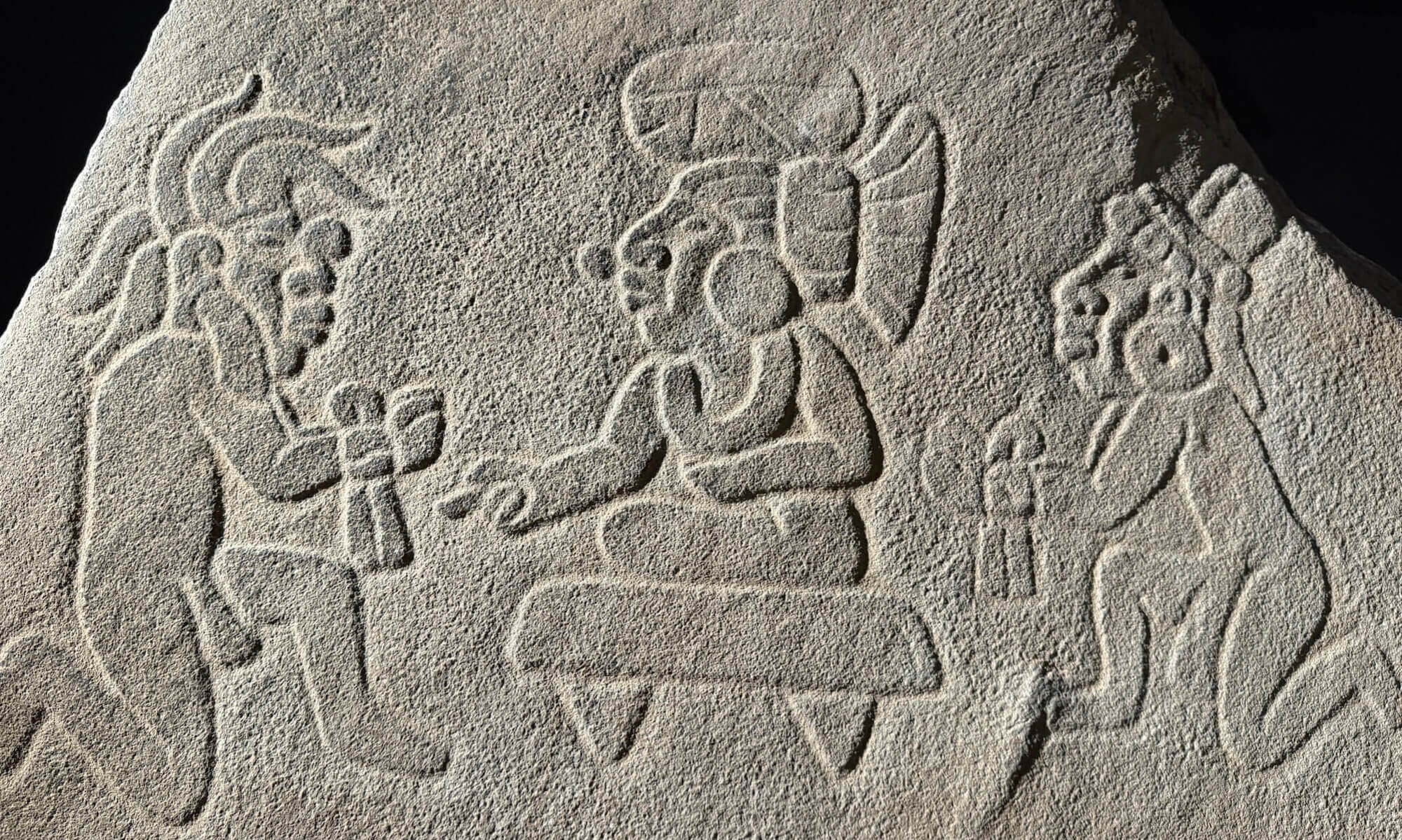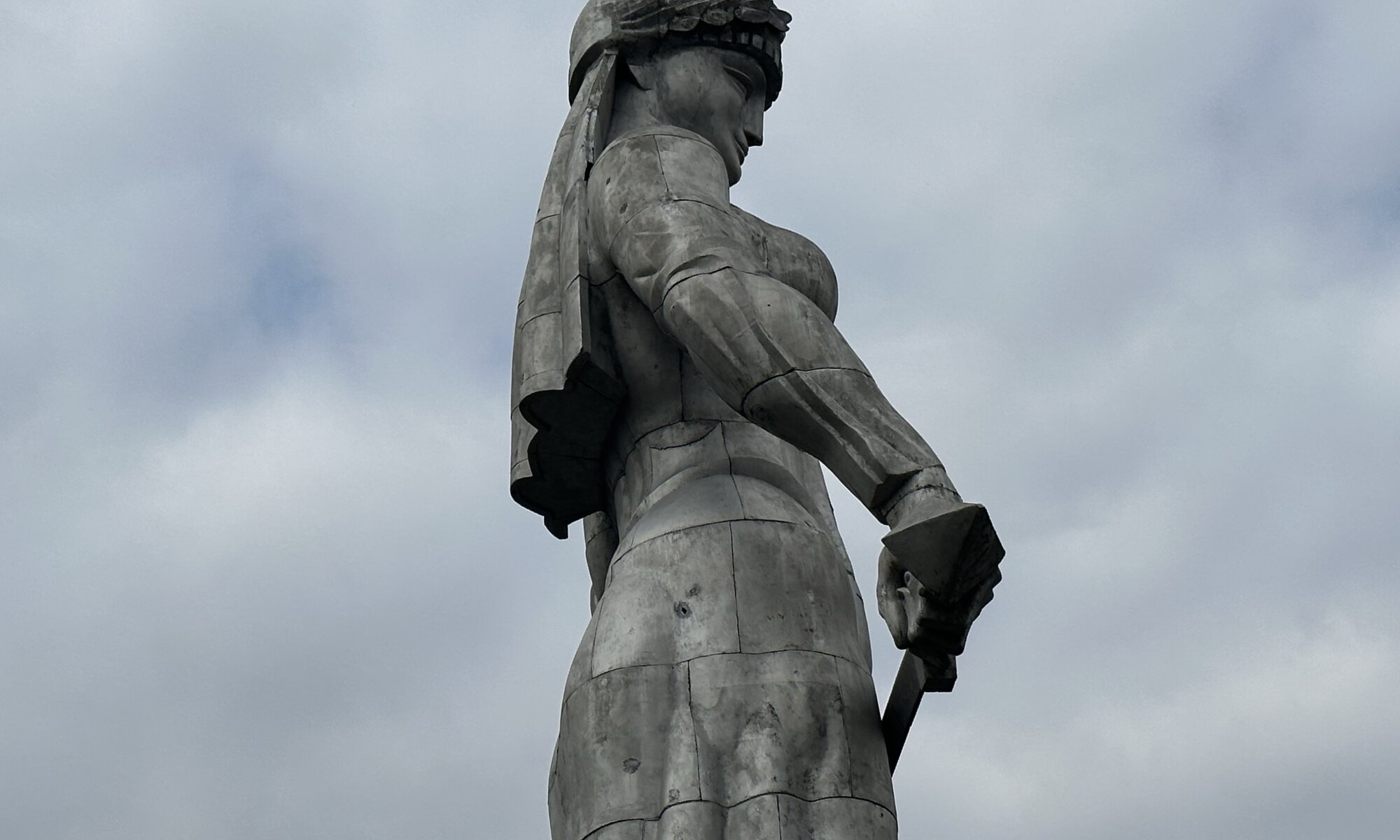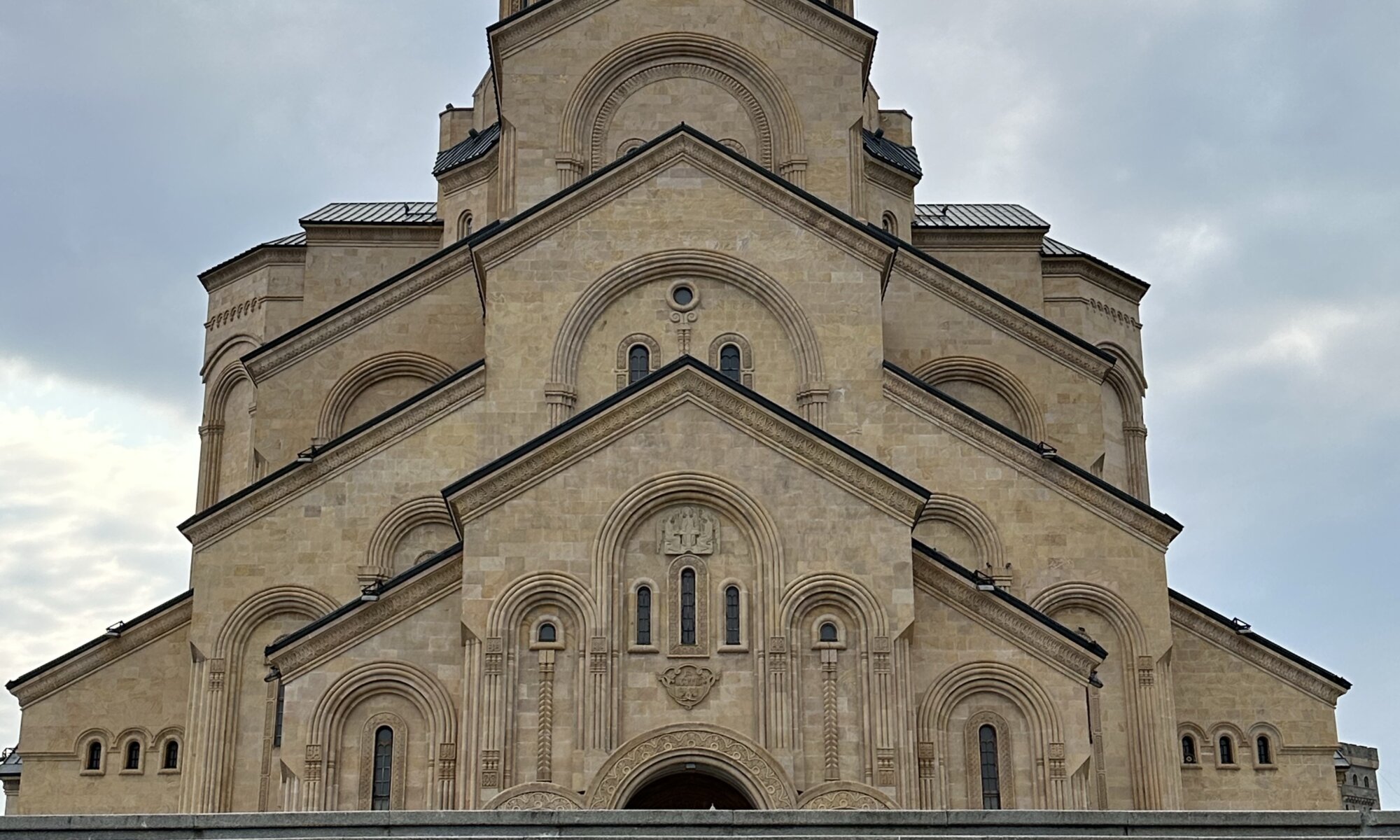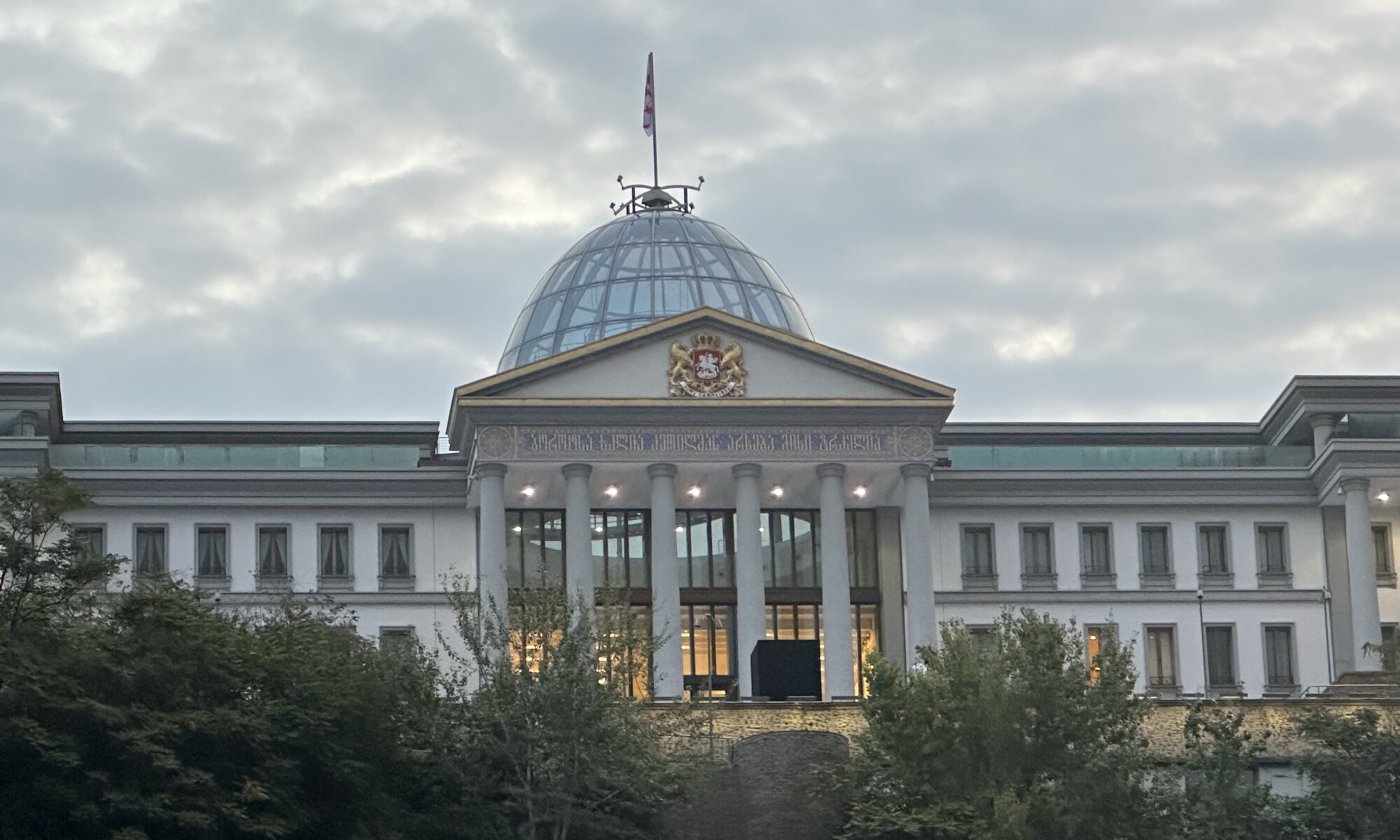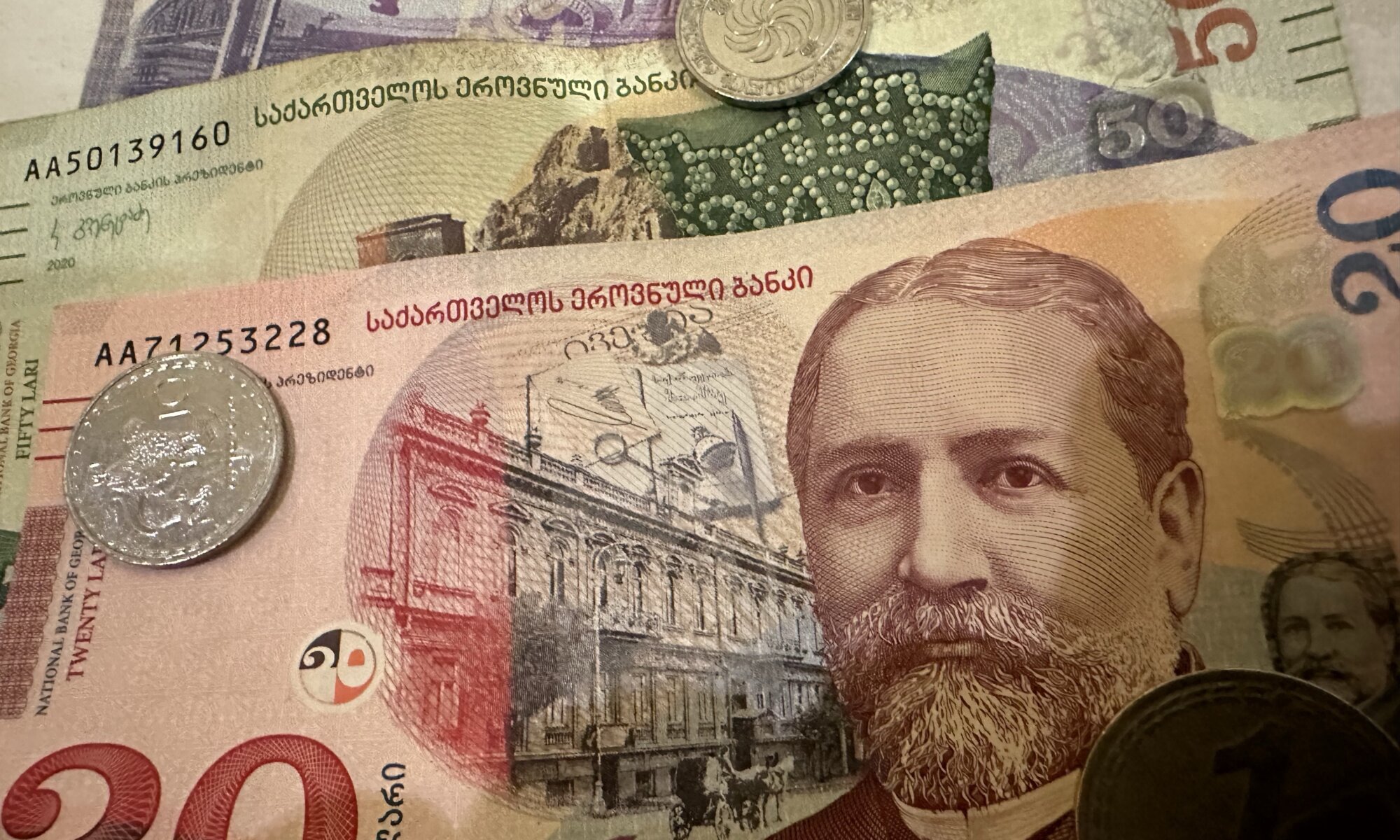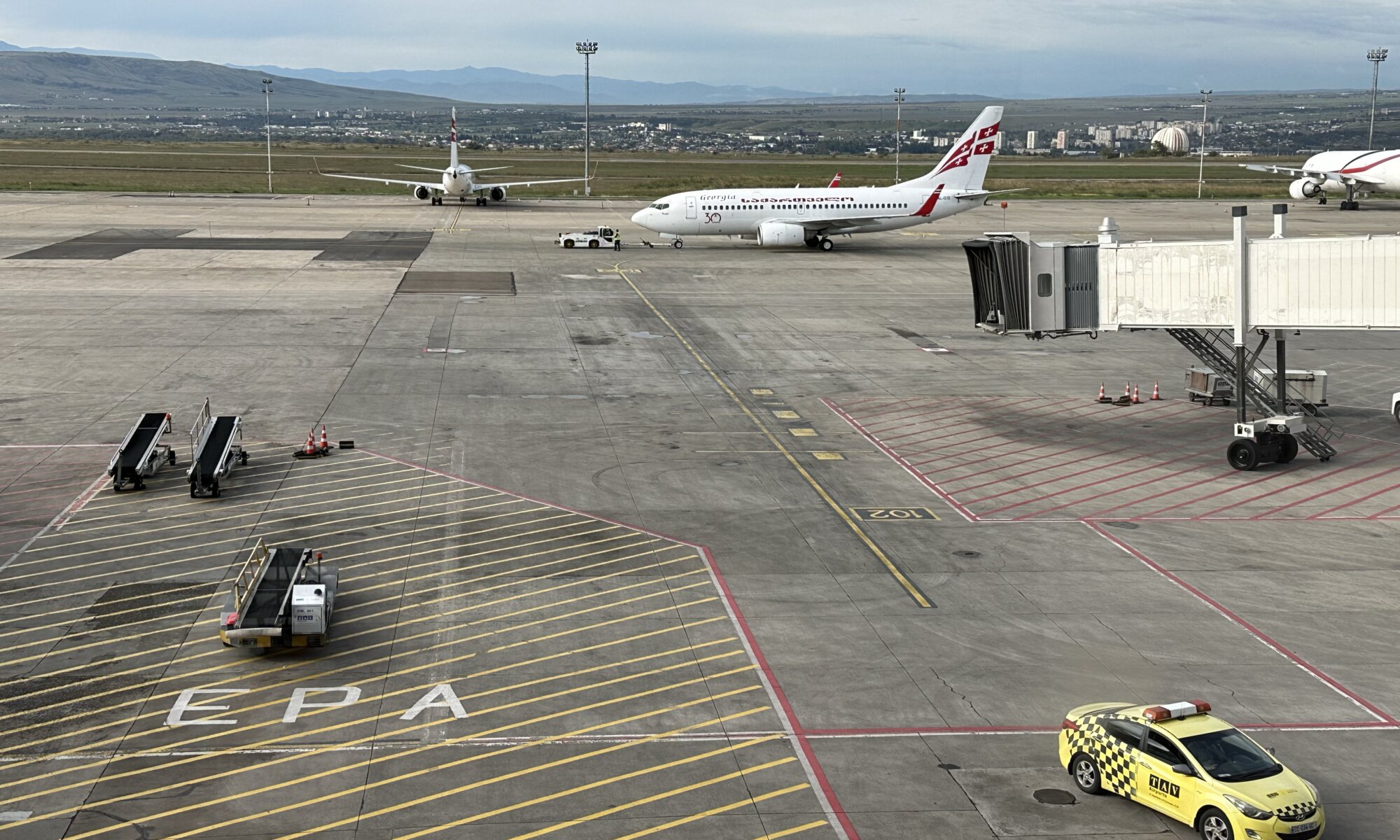Since 1958 a giant woman made of wood and covered in aluminum is standing high above the city of თბილისი. Kartlis deda, the mother of Georgia, symbolizes the city of Tbilisi and carries a bowl of wine for her friends in one hand and a sword for her enemies in the other. It was erected for the 1500th anniversary of the city and in 1997 it received an update: now holding her head up high and crowned with laurels. The monument reminded me much to the Mother Armenia at Երևան.
Continue reading “Kartlis deda”Sameba
The Sameba cathedral at თბილისი (also called Holy Trinity Cathedral) is a vast modern church in the city quarter Avlabari, located on Elias hill. It was built until 2004 and is the largest church building in Transcaucasia. The church itself is vast, but it is already special by its surroundings: the nine hectares large park around it, the stairs leading from the main gate to the church accompanied by columns showing Christian history. It consists of a campanile and nine chapels dedicated to saints, apostles and archangels. Most beautiful is the impressive mosaic behind the altar.
Continue reading “Sameba”Metechi
The historic center of თბილისი is a rock next to river Mtkwari and todays Europe square. On top you will find the Metechi church, an orthodox church from the 13th century surrounded by a nice garden with many pomegranate trees. While it is today standing alone on top of the rock it was formerly surrounded by the royal palace of თბილისი. The Russians converted the palace into a jail that was also used to incarcerate dictator Joseph Stalin (born at Gori close to Tbilisi). In 1937 the buildings were demolished leaving only the church in this location.
Continue reading “Metechi”Presidential palace
In 2003 the Revolution of Roses occurred at Georgia, removing president Eduard Shevardnadze and replacing him by the leader of the opposition, Mikheil Saakashvili. In the upcoming years Saakashvili successfully fought corruption and developed the country. He brought western architects to თბილისი and built modern elements like the Bridge of Peace, the Rike Concert Hall or the new presidential palace at Avlabari, high above river Mtkwari.
Continue reading “Presidential palace”Lari and tetri
On April 9th, 1991, Georgia gained independence from the Soviet Union. After that, the Russian ruble was used in parallel to western currencies and Kuponi, a kind of emergency money. In 1995 the country introduced its own currency, the Lari (GEL). Lari means ‘property’ or ‘treasure’ in Georgian language and a Lari is divided into 100 Tetri. The bills show important personalities and buildings of the country.
Continue reading “Lari and tetri”თბილისის საერთაშორისო აეროპორტი
The international airport of თბილისი (TBS) is also the largest airport of Georgia. It has two runways and two terminals; it serves more than three million passengers every year. German passengers will see this airport only at night: Lufthansa lands here always at 4 am to be able to start again at 5 am and be back in central Europe for normal flight times after 9 am. That feels a bit odd, but the airport is fully operational at night.
Continue reading “თბილისის საერთაშორისო აეროპორტი”